Check out our unique range of wines that are no longer produced. The wines we offer were imported to the Netherlands in 2012. We sell our stock until it runs out.
All of Massandra’s wines have traditionally (1894) been produced organically. The vines of the vineyards are more than 100/120 years old. Massandra was given “carte blanche” first by the tsar and later by successive Soviet leaders regarding the cost of producing these special wines. All wines were produced without adding sulphite (cold stabilisation method).
Due to the perfect subtropical climate on the southern coast of Crimea and the huge number of 4,000 workers, first the Tsar’s serfs and later Soviet Union officials/gardeners, the vineyards have always been “manned” in such a way that they could manually keep the vineyards clean of e.g. bad mold or other impurities that could harm the grape harvest. Hence, chemicals to combat impurities never came into play. The “carte blanche” also contributed to Massandra being able to bottle the wines cost-effectively without the addition of sulphite.
Oreanda Massandra (Херес)

OREANDA (ХЕРЕС) vintage 2007 was awarded 11 gold, 2 silver medals, and 1 Grand Prix Cup. Oreanda called ‘Херес’ in Ukraine, is a fortified wine produced by the sherry method (solera) using flor. Oreanda has been produced since 1944 using the old method as it was done in Jerez de la Frontera in the mid-1800s.
Oreanda, named after the village of Oreanda, on the southern coast of Crimea, where the vineyards are located. The wine is fortified with grain alcohol, as has been done since the beginning of 1894. Grain alcohol has no undertaste and allows the wine to come out completely as it is, unlike grape alcohol as used in Spanish Sherry, Madeira, etc. Oreanda has traditionally been organically produced and no sulphite is added to any of the Massandra wines. Oreanda has a Sherry flavour that is still sometimes recognised at old Sherry bodegas in Spain if one still has Sherry from the mid-1800s. The flavour is most reminiscent of an Amontillado.
Oreanda Wine Characteristics
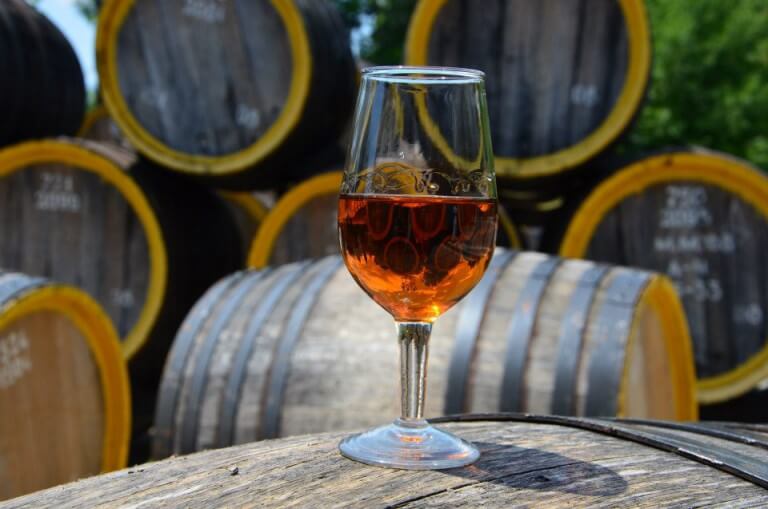
Oreanda is made from Sercial, Verdelho, and the indigenous Albillo grape. The wine has an intense amber colour. The bouquet is bright and fine with exceptionally complex hints of nuts, green walnuts, pear, melon, and cognac. The characterful palate is full and harmonious with pleasant hints of deep roasted nuts, bitter almonds and rich, very long (up to 2 minutes!) finish.
“The Sherries make for some of the most outstanding drinking imaginable.”
— Frank Martell, director of fine and rare wine at Heritage Auctions
Imperial Massandra (Мадера)
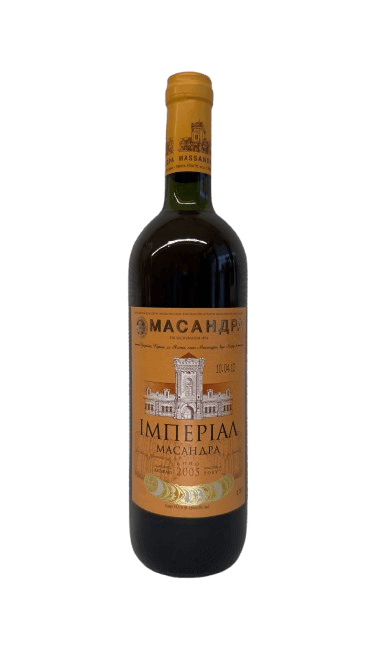
IMPERIAL vintage 2005 was awarded 10 gold and 5 silver medals. Initially, this wine was made only for the tsar and his family. Tsar Nicholas II had an excellent knowledge of wine and a distinct love of Sherry, Madeira and Port. This type of wine was made as Madeira wine and was for the first time produced around 1894.
Specifically, the Crimean-Abillo grape used in Imperial Massandra is grown on the sun-heated slate soil of the southern slopes of the Crimean Mountains. The well-ripened Abillo grape gave the wine character and a distinct flavour. The wine is aged for 5 years in weather conditions in 80% filled oak barrels (Caucasian oak) outdoors directly on the coast. After 5 years, 40% has evaporated. One takes this for granted because of the quality and intensity achieved. The wine then matures further in bottle and is finally released on the market after 6 to 7 years. Imperial Massandra is produced organically without the addition of sulphite. Imperial Massandra is fortified with grain alcohol.
Imperial Wine Characteristics

The wine has an amber/gold colour. The bouquet is bright, ripe, and richly fragrant with a spicy hint of deep-roasted hazelnuts and almonds. The palette is harmonious, with pleasant bitter notes and nice undertones of vanilla, and cognac. It has an extended, noble finish with a refreshing character of almond bitters and hazelnuts.
“Scarcity and quality together make something marketable, but there are so many other things that contribute to the cool factor of what we find precious. Massandra in many ways owns a bigger part of my heart than the classics […] because there is so much more than quality in the bottle.”
— Frank Martell, director of fine and rare wine at Heritage Auctions
South Coast Kagor (КАГОР)
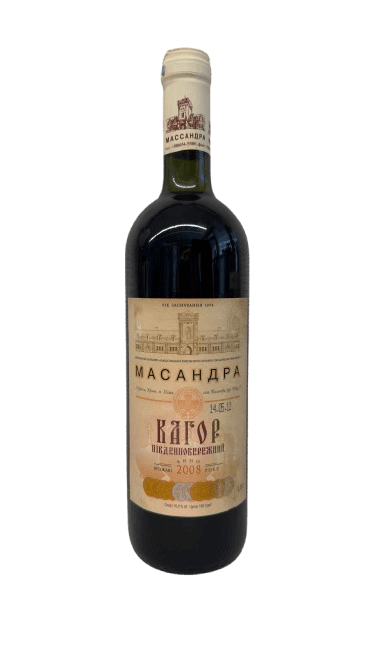
SOUTH COAST KAGOR (КАГОР) vintage 2008 was awarded 8 gold and 2 silver medals. South Coast Kagor was initially only a mass-produced wine for the chapel close to the tsar’s country residence in Crimea. Production had always been limited to no more than 30,000 bottles a year.
The wine was made from the Saparavi grape, a grape brought to Crimea from Georgia some 3,000 years ago, probably by the Skythians. The deep red colour of its flesh and skin made this grape very suitable for a mass-produced wine. This wine was never intended for sale. The wine is aged for 3 years in Caucasian oak barrels before bottling. It is produced organically and without the addition of sulphite.
Kagor Wine Characteristics
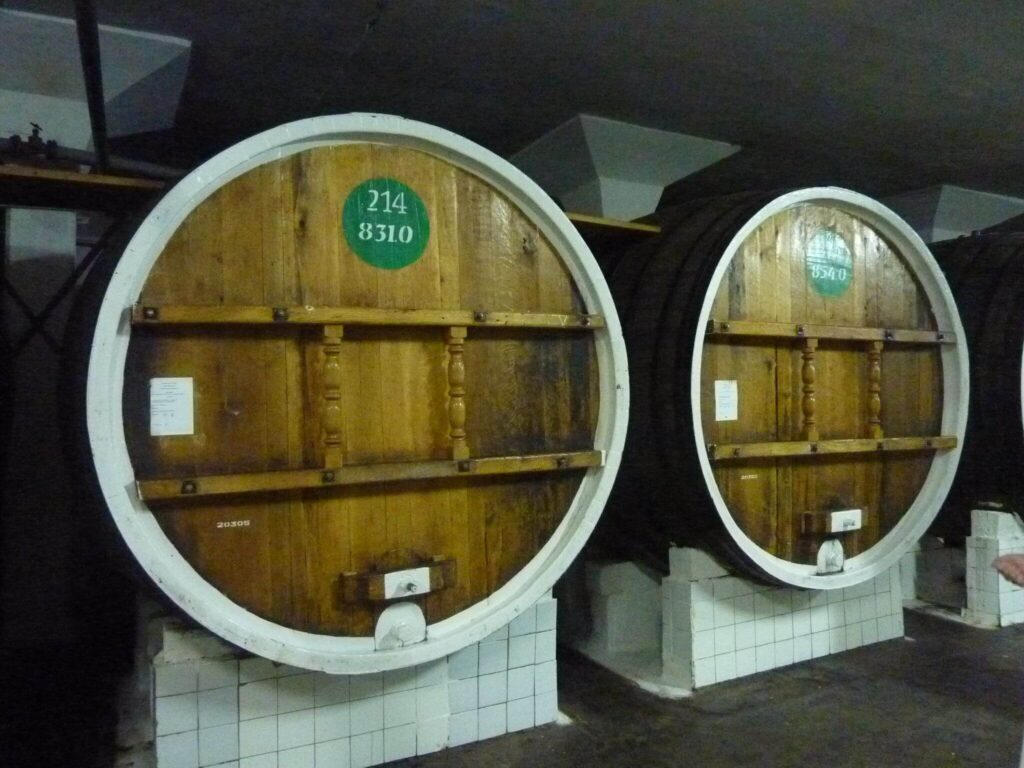
South Coast Kagor has an intense deep ruby red colour. The bouquet is rather complex with hints of cream and blackcurrant, blackberry, forest floor, and dark chocolate. The palette is full, and harmonious with a pleasant balance of tannins and notes of coffee, chocolate, and vanilla. Although the wine naturally contains 16% sugar, the finish is remarkably dry and extremely long.
If you want to buy our Massandra wines, or if you have general questions, please get in touch by sending an email to jan@massandrawine.org
On request, we will send you our price list or make an appointment for a tasting session.
“But damn, what a wine (made via the sherry method). Hardly available here. Should you do see it: buy it!”
— Felix Wilbrink, Dutch wine reviewer at De Telegraaf
Wines Fit for a Tsar
By Frank Martell
Auction specialists are driven by an irrational compulsion to handle the rarest and most precious relics in our respective fields. As director of fine and rare wine at Heritage Auctions, those needs are fed regularly.
Dealing with the most exclusive property each day is a luxury that cannot be overestimated, but we also have things that we find unusually satisfying — intellectually and emotionally. These are items that are perhaps not the most expensive or rare but still hold a warm spot in our hearts, simply because they are so incredibly cool . They are items that speak to our inner geek, despite falling outside the realm of what is traditionally coveted.
For example, one expects to find greatness in the vineyards of France. Indeed, great estates like Lafite and Romanee Conti were identified centuries ago as vineyards of exceptional quality — and being surrounded by wines of this caliber provides a certain sense of satisfaction. Italy, Spain, the United States and Australia have also put forth some superlative estates, but who would believe that an experienced professional would develop a major weakness for a winery in… Ukraine ?
In the early 1800s, Count Mikhail Vorontsov settled on the south coast of Crimea and planted vines with his heart set on making wines to rival the classics produced in France, Spain, Portugal and Hungary. He began the work of building a winery which would later be replaced by a grand Chateau cut into the granite mountains of Crimea. In the mid-late 1800s, winemaking was assumed by Prince Lev Golitzin, who concluded that greatness would not be achieved by emulating the dry reds of France, but rather by taking advantage of the subtropical climate and fashioning dessert and fortified wines of amazing distinction and individuality. The Massandra Winery was then built between 1894 and 1897 before immediately setting to work providing wines to Tsar Nicholas II at his summer palace Livadia — and the rest is history.
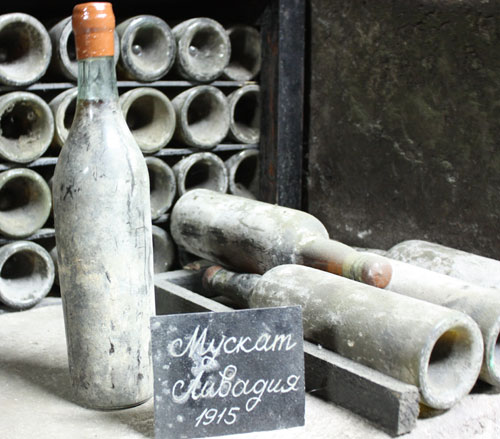
There is a lot to love in the story and wines of Massandra, then and now. There is the incredible facility that stores these wines in virtually unchanging conditions, deep underneath the main edifice. It took 300 workers more than three years to carve those tunnels into the stone by hand, including a flue at the end of each which could be adjusted to control the amount of cold mountain air brought into the caverns as needed. There is the obvious historical importance of the winery and facility, considering the fact that many wines produced before 1917 were made to be served to the Tsar and his guests, since the exclusive rights to production of these wines were held by Romanov’s Royal Family. There are fascinating stories describing the survival of all these wines in the collection throughout long periods of political unrest and world war. Wine lovers can find themselves overwhelmed by these narratives and others, but what really launches Massandra into the stratosphere of collectibles is the unyielding quality of everything produced throughout the history of this great estate.
The Massandra Collection simply does not include any sub-par wine. The facility today is responsible for vinifying and bottling wines produced by a number of local facilities which care for around 5,000 hectare that is planted under vine. There are dozens of unique microclimates along the coast, not all of which are included in the top cuvees — so they can afford to be very selective about what bears the standards set forth by the incredible history of this estate. Many of these wines are still being produced in continued tradition, using old methods and only moderately updated technology — but what is most staggering is the degree of consistency and transparency produced throughout many decades and including modern vintages.
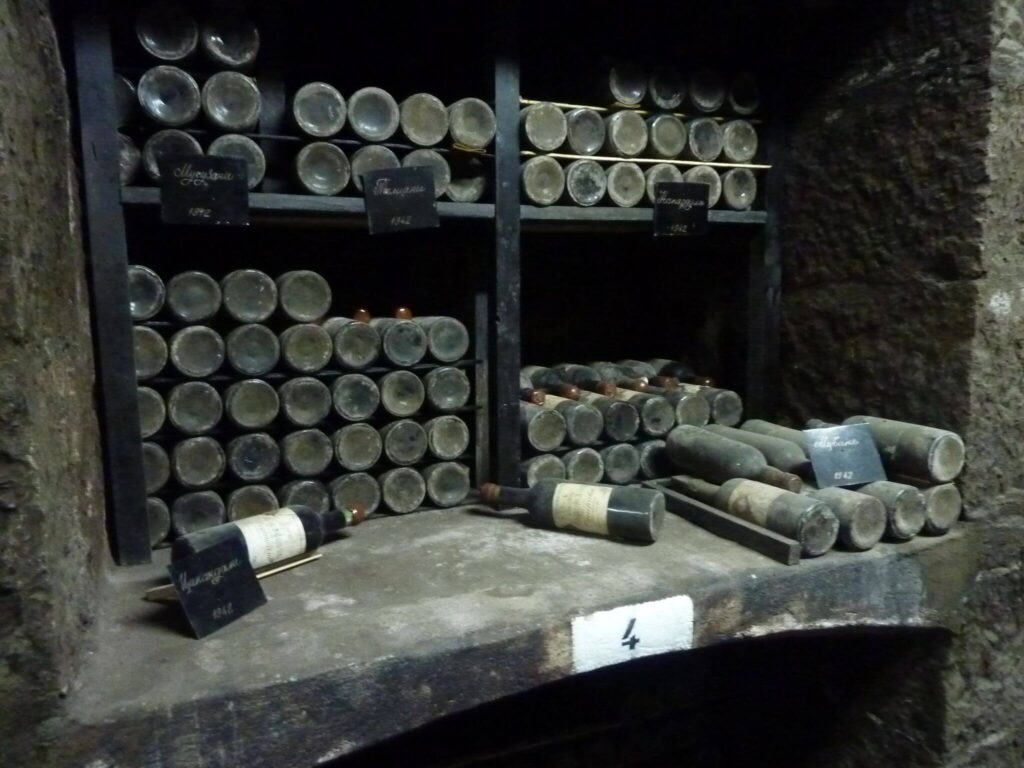
Tremendous Character
In August 2007, I was fortunate enough to visit Massandra, where I was spoiled with an extremely comprehensive sampling. We tasted across dozens of horizontals and verticals — over 90 wines going back as far as the late 1700s. There are not many places in the world where that is possible, much less so pleasant. To say that the wines are delicious, or exquisite, is utterly inadequate — but it’s a starting point.
Virtually everything we tasted over the course of three days was fortified, but rather than being fortified with Cognac or Brandy, they use grain alcohol. Interestingly, the grapes (and therefore the wines) achieve an extraordinary level of ripeness because of the climate, and so they are extremely sweet and low in acid — so the spirit actually helps to create an unusual but precise and elegant balance.
The Muscats and Cabernet Ports must be tasted to be believed while the Tokay of Ai Danil remains legendary and the Sherries make for some of the most outstanding drinking imaginable. There is tremendous character and quality in every varietal they produce, but the greatest sweet wine I have ever tasted was the 1914 Massandra Malaga, which was so good as to be difficult to describe. I don’t know if it is more impressive that that one glass stands out in my mind among the many legends I have tasted, or that I can’t think of a single wine we tasted that I didn’t enjoy.
Wine lovers understand that taste is only a part of what makes a wine valuable.
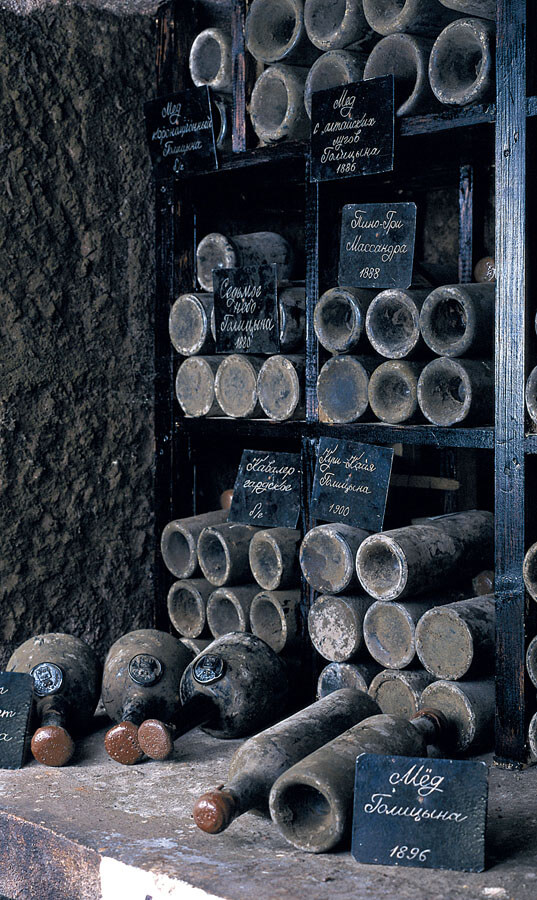
Scarcity and quality together make something marketable, but there are so many other things that contribute to the cool factor of what we find precious. Massandra in many ways owns a bigger part of my heart than the classics because there is so much more than quality in the bottle. I love La Tache, and on the day I can afford to buy the vineyard you will see exports drop to a staggering zero bottles per year while my popularity rises and the attendance at my parties climbs steadily. I love the wines of Pride Mountain, because the wines are delicious and because the people behind the label are so exceptional. All that said, I love sharing Massandra because it is unusual, and because it sparks the imagination and drives conversations about history and the world we live in.
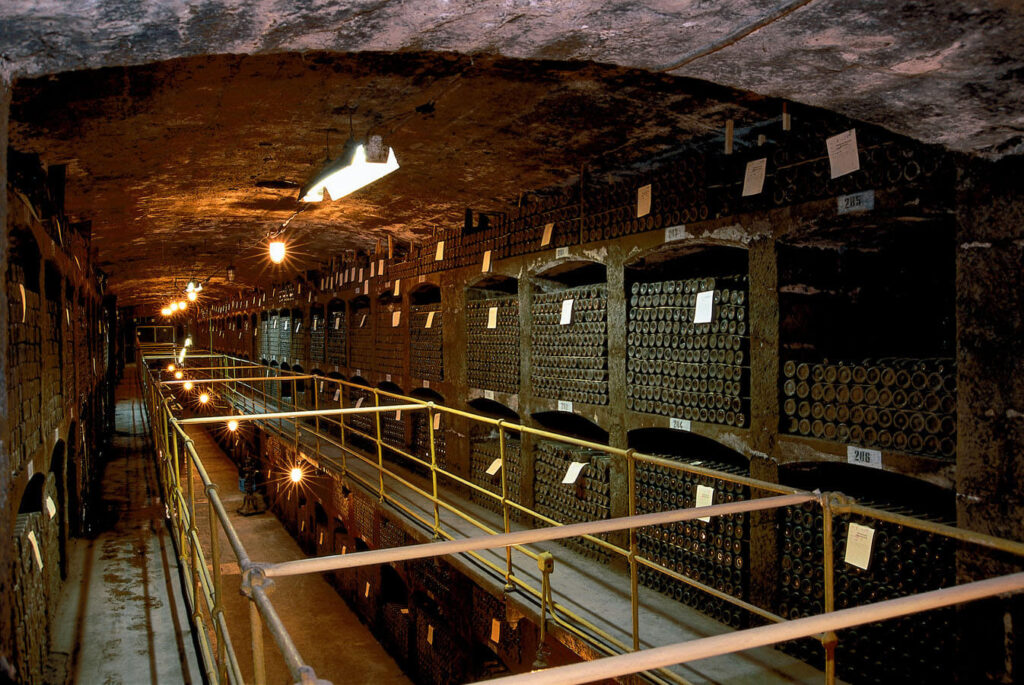
You don’t have to love sweet or fortified wines to enjoy drinking these remarkably poised wines, which is yet another value added. Massandra does not produce the most expensive wines on earth, but they are incredibly interesting, delicious and precious — compelling, even — and my inner geek really digs that.
Frank Martell is director of fine and rare wine at Heritage Auctions.
